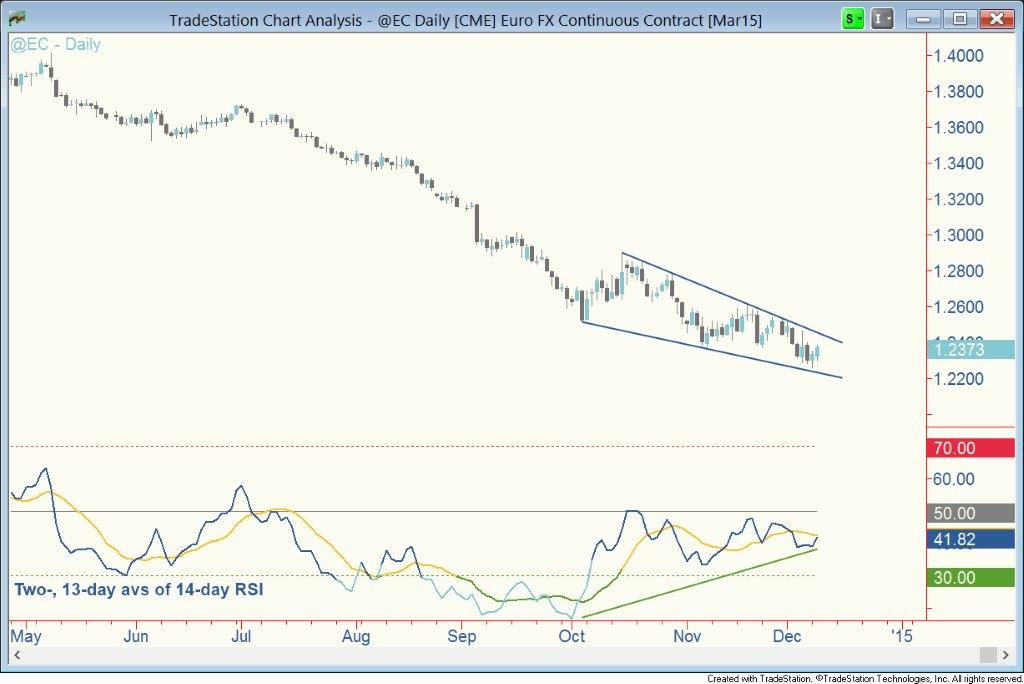The euro has been clobbered since May as the crowd positioned for economic weakness in the European Union, along with strength in the U.S. and the higher interest rates that will eventually come. I don’t see anything in the headlines to suggest that story has changed. But short euro has been a crowded trade, and selling pressure has eased since the beginning of October. Be on the lookout for a move sideways or higher, even if it ultimately proves to be temporary.
The daily price chart shows a falling wedge formation. Each new low undercuts the last by a smaller margin, indicating diminished selling pressure. In simplified terms, the smart money covers short positions while the retail crowd continues to sell into the downtrend. Once the upper barrier is pierced, those caught short rush to buy back, propelling the market higher. The upper barrier comes in just above 1.240 in the coming days.

Improving momentum contributes to evidence that the downtrend is losing force (think of this as a mathematical confirmation of the smaller margin of each new low). Moving averages of the relative strength index dropped to deeply oversold conditions in September, portending a point of seller exhaustion. Lower lows in price in November and December were accompanied by substantially higher lows in RSI averages. Bullish divergences between price and momentum such as this are usually followed by a move sideways or higher.
Keep in mind a long position in euro futures would be a relatively high-risk trade since you’d be going against the larger trend. Another route would be an options trade that reduced risk, such as a bull spread.
Good trading, everyone.




